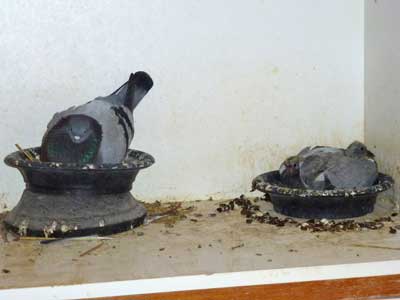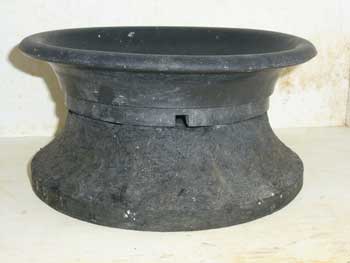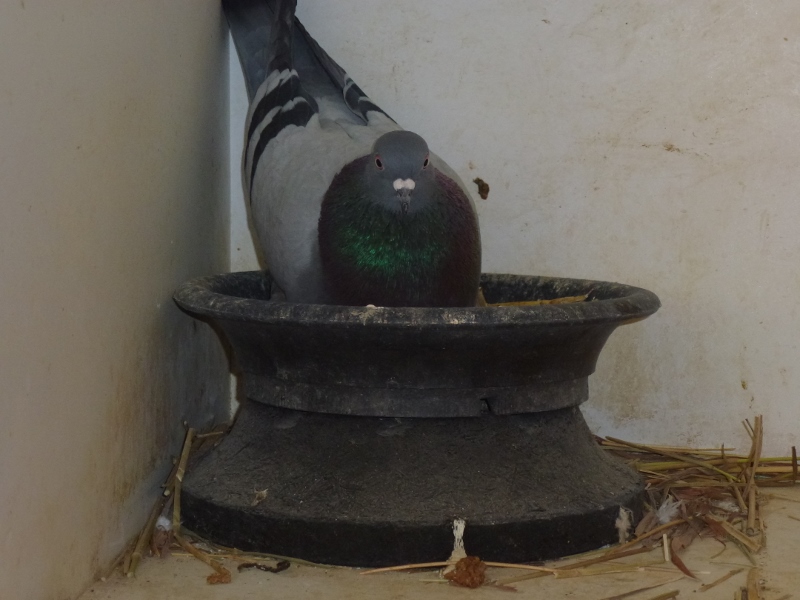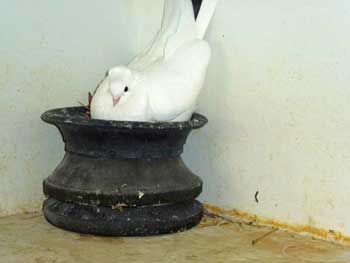Double-floor nesting bowl

Flying pigeons, especially Tipplers, are a fast breeding tumbler race. A good Tippler pair has two fertilized eggs in their nest every few months on about the same date. This means, that when the young are about 12 days old, the female already lays the next two eggs. During this time it is important that a second nesting bowl is put into the nesting cell, so that the pair can brood the following eggs in peace. There are bad surprises from time to time and the nesting bowl in which the young should be is found empty. The young have left the breeding bowl and have put themselves under their parents, which is only natural of course. This leads to breaking or pushing out of one or both eggs. To prevent this there are a few possibilities. If the cells are high enough a board can be installed in half the height of the cell to put the nesting bowl on. In my old pigeonry a breeding cell consisted of two attached cells. The passage to the far end (where they breeded) was 10cm above the floor and so the young could hardly ever manage to get to the breeding parents. A year ago I moved to a new pigeonry with my pigeons. The breeding cells consist of only one cell. They are not high enough to install an intermediary floor. So I had to look for an alternative. I put two nesting bowls turned over one on the other. (End to End see picture).
I thought and hoped that this would work. Most important was that I had to strongly attach the two bowls to each other so that (when the pigeons fly into the upper one) it stays solidly fixed and does not fall down. So I drilled a hole through the bowls’ floors and put a screw into it. On the lower bowl’s side I screwed on a bolt nut and in the nesting bowl, in which the Tippler’s would be breeding I sunk the screw’s head in so that it would not hinder the eggs.


The Screw’s head is sunk in. The lower bowl with the bolt nut.
Important is that when the pair is beginning with their first brood to already put in the double-floor nesting bowl so that it can get accustomed to the new nesting bowls from the start. Then they already know the higher nesting bowl when the next broods are coming.
When the young are about 10 days old I put them into a normal nesting bowl and put it into the cell on the other side of the higher nesting bowl. Should the young still manage to climb into the higher nesting bowl you can put another bowl under the double-floor nesting bowl. See following picture.
You can vary the height of your nesting bowl by putting several bowls unto each other.
To clean the bowls you only have to unscrew the nut bolt to severe the bowls from each other. If you have thoughts about parasites accumulating between the two bowls you can put insect powder on the bowl’s floors which then are attached to each other.
Walter Stettler CH Binningen www.flugtippler.ch